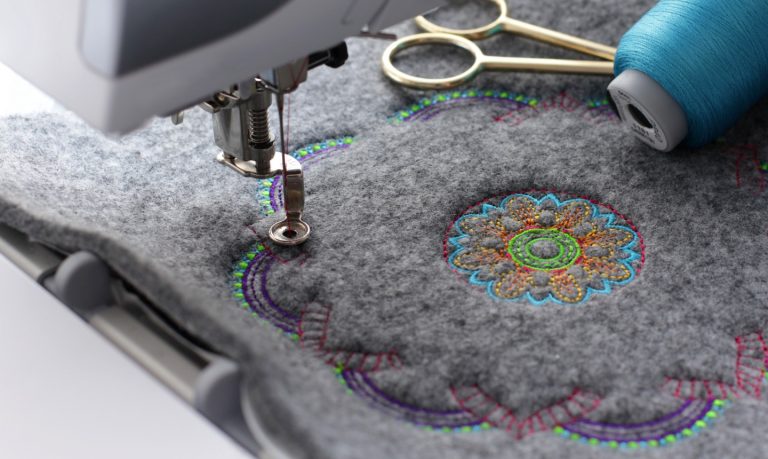Mastering the Needlework Digitizing Process: Your Ultimate Overview
Embroidery digitizing is a precise craft that needs precision and knowledge to equate complex layouts right into electronic styles for maker needlework. As craftsmens get started on this trip to understand the embroidery digitizing process, an extensive understanding of the fundamentals establishes the foundation for excellence.

Understanding Needlework Digitizing Basics
Embroidery digitizing essentials develop the structure whereupon elaborate designs are converted right into machine-readable formats for precise sewing. This initial action in the embroidery digitizing procedure is important for ensuring that the final embroidered product is a loyal representation of the initial layout. Comprehending needlework digitizing essentials entails comprehending key concepts such as stitch kinds, stitch instructions, density, padding, and pull settlement.
Stitch types play a vital function in establishing the aesthetic and textural result of the embroidered layout. By choosing the ideal stitch kind, whether it be satin, fill, or running stitch, digitizers can achieve the wanted effect and improve the general quality of the needlework. In addition, sew direction influences the circulation and dimension of the style, while thickness establishes the spacing and protection of the stitches.
Moreover, padding sewing supplies stability to the design by safeguarding the textile and avoiding distortion throughout the embroidery procedure. Pull settlement is one more important consideration to combat the natural tendency of material to contract when stitched. Grasping these needlework digitizing fundamentals is essential for developing professional-quality stitched items.
Choosing the Right Digitizing Software Application
Selecting the suitable digitizing software program is a critical decision that dramatically affects the efficiency and top quality of the needlework digitizing procedure. Digitizing for Embroidery. When choosing the right digitizing software, it is important to take into consideration variables such as the complexity of layouts you intend to produce, the user-friendliness of the software, the degree of consumer support used, and the compatibility with your needlework maker
There are numerous digitizing software program alternatives readily available in the marketplace, varying from basic programs for novices to sophisticated software for professional digitizers. Some preferred selections consist of Wilcom EmbroideryStudio, Hatch Needlework Software Program, and PulseID. These software packages provide a wide variety of devices and features to assist you develop intricate layouts with ease.
Before choosing, it is advisable to explore the various software program alternatives with cost-free tests or demonstrations to figure out which one finest fits your demands. In addition, checking out reviews and seeking referrals from experienced digitizers can provide valuable understandings into the strengths and weak points of each software program bundle (Digitizing for Embroidery). By thoroughly evaluating your requirements and contrasting the functions of different digitizing software program, you can make an educated choice that boosts your embroidery digitizing workflow
Digitizing Devices and Methods

Optimizing Layout Setup for Needlework
Grasping the ins and outs of layout setups view it now is basic in attaining optimum lead to the needlework digitizing procedure, building upon the foundation laid by comprehending digitizing tools and methods. When enhancing style settings for embroidery, it is vital to take into consideration variables such as stitch kind, thickness, padding, draw payment, and enrollment. Stitch type selection impacts the total appearance and feeling of the layout, with alternatives like satin, fill, and running stitches offering different textures and effects. Thickness describes the spacing and density of stitches, impacting the style's protection and toughness. Appropriate rug stitching offers stability and stops material distortion, particularly for complicated styles or on stretchy products. Pull payment readjusts for material stretch during sewing, ensuring exact layout replication. Enrollment setups align various components of the design properly, he said preserving overall layout stability. By fine-tuning these design setups, embroiderers can enhance the top quality and precision of their stitched developments.

Troubleshooting Common Digitizing Issues
When encountering usual digitizing issues throughout the needlework process, it is vital to comprehend the source and implement efficient remedies quickly. One usual problem is stitch thickness concerns, where stitches may be as well thick, causing the material to tighten, or also sparse, causing voids in the design. Changing the stitch thickness setups in the digitizing software can assist settle this issue.
One more constant challenge is thread breaks during the needlework procedure. This can occur because of numerous reasons such as incorrect stress setups, dull needles, or utilizing low-grade string. Guaranteeing correct upkeep of the embroidery maker, including routine needle adjustments and stress changes, can minimize the occurrence of thread breaks.
Additionally, layout enrollment mistakes can cause misaligned elements within the embroidery design. Checking the top article design alignment in the digitizing software application and making required modifications before stitching can assist in avoiding this issue. By dealing with these typical digitizing problems immediately and successfully, you can make sure a smoother needlework procedure and high-grade ended up items.
Final Thought
Finally, grasping the embroidery digitizing process needs a solid understanding of the basics, the right selection of software, and expertise of devices and techniques. Optimizing layout setups and fixing common digitizing issues are critical actions in making sure top notch embroidery results. By adhering to these actions carefully, one can accomplish precision and performance in the digitizing procedure.